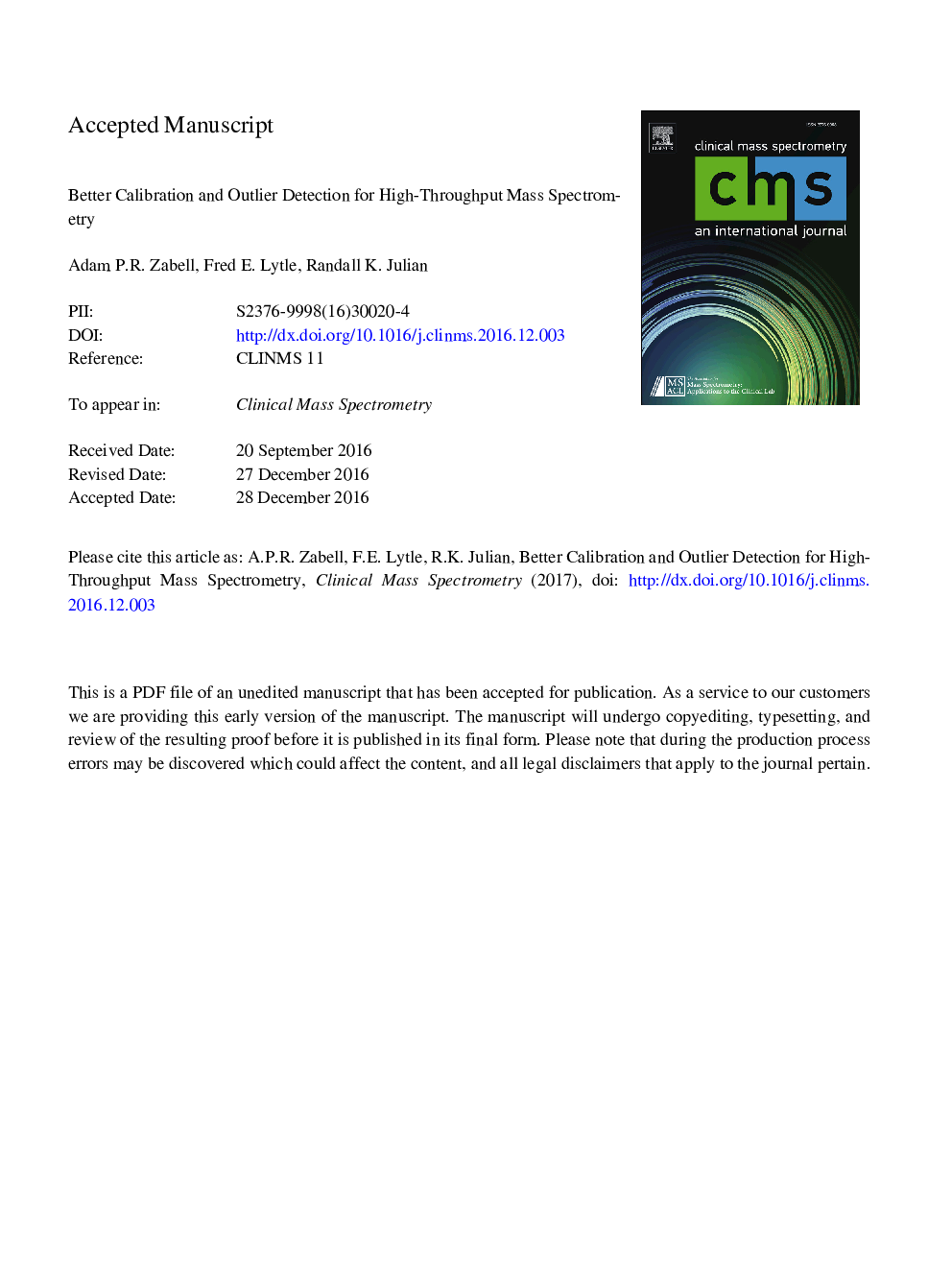| Article ID | Journal | Published Year | Pages | File Type |
|---|---|---|---|---|
| 8917905 | Clinical Mass Spectrometry | 2016 | 23 Pages |
Abstract
Instrument calibration, required for any accurate quantitative calculation, is a trivial process when performed correctly, but is also full of easily overlooked stumbling blocks. To minimize the risk of error associated with improper calibrations, national and international guidance dictates a minimum number of calibrators and the threshold at which a measurement becomes an outlier. Evidence from industry practice, which conflicts with regulatory guidance, suggests that most groups are focused on remapping their detector with each run. We present a post facto explanation for the calibrator minimum and provide recommendations for curve building, which include improved outlier detection for high-volume mass spectrometry laboratories.
Keywords
Related Topics
Physical Sciences and Engineering
Chemistry
Spectroscopy
Authors
Adam P.R. Zabell, Fred E. Lytle, Randall K. Julian,
